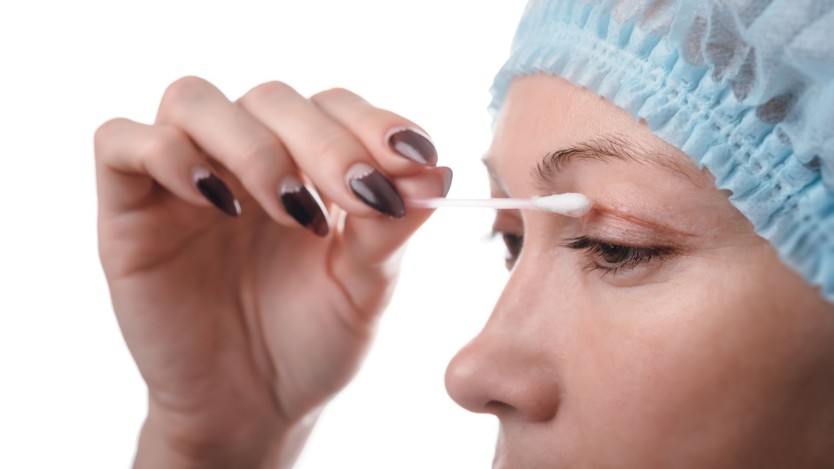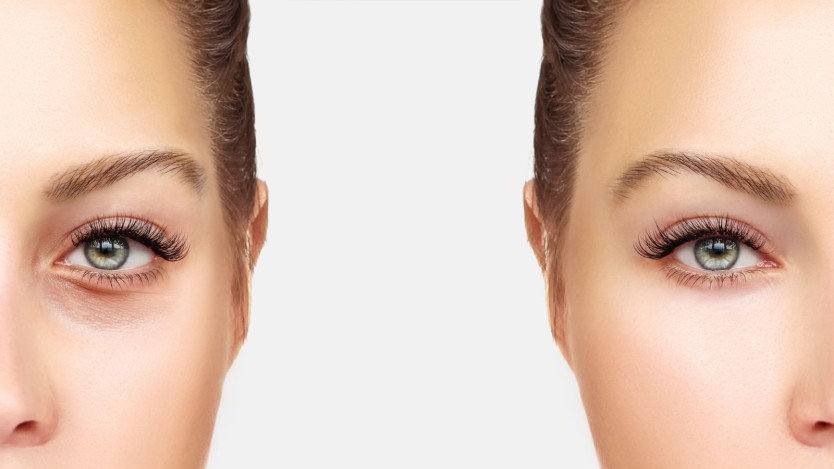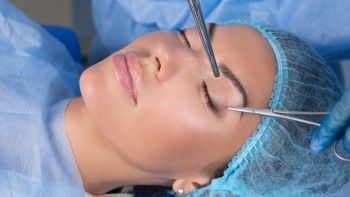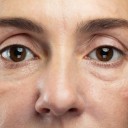Recovery time after blepharoplasty

- Home recovery after blepharoplasty
- Healing time and care after blepharoplasty
- Time of appearance of results
- Request surgical assessment consultation for blepharoplasty surgery
- Frequent Questions
- After blepharoplasty surgery, it is very important that patients follow the guidelines indicated by the specialist, for example, applying eye drops and ointment to recover the lubrication of the corneas and drugs to avoid infections and pain.
- This facial surgery is one of the most popular and most requested in Spain. It is a very effective treatment for eye rejuvenation and has a high rate of satisfaction with the results.
- Both the drooping of the eyelids and the formation of bags are mainly due to age, as with the passage of time there is a loss of skin elasticity and the accumulation of fat, causing the appearance of a sad look and a tired face.
Blepharoplasty, like any surgery, has a recovery period after surgery. Being aware of what to expect after the operation is often just as important as knowing what to expect during the procedure. Below we discuss the time involved in recovery and care during this period.

Do you need blepharoplasty surgery?
Request a free and immediate appointment with our specialists
Home recovery after blepharoplasty
Care and treatment at home
Before the patient leaves the hospital, the specialists usually explain to the patient what care they will have to carry out throughout their recovery. We will now discuss the most common home care and medication guidelines for the first few days.
On returning home after blepharoplasty surgery, the patient will need to have the following at home:
- Physiological saline solution for eye wash, either in single-dose or syringe-loaded for later application.
- Gauze and perhaps a sachet of small sterile plasters.
- Sunglasses, dark and preferably large, to avoid direct light in the eyes and disguise the initial appearance.
In addition, the doctor prescribes antibiotics, painkillers, eye drops and eye ointment to be applied at night, and above all ice, which should be placed on the inflamed area for the first few days.
After blepharoplasty, it is normal for the eyes or corneas to feel a little irritated and dry. This may be due to the cornea being exposed to the light from the operating theatre lamp or to the betadine used to disinfect the area. To remedy this, it will be necessary to apply the eye drops during the day and use the ointment at night, keeping the cornea protected and lubricated. It is also advisable to wash the eyes with serum as often as necessary to soothe the itching or dryness.
Tips for remedying pain
Pain is not usually a side effect after surgery, but if it is not relieved by painkillers or ice, it is advisable to see a doctor again.
Painkillers are generally taken for the first 3-4 days, used to relieve the usual discomfort in the lateral part of the eye sockets caused by the stitches in the orbicularis oculi muscle, located at the level of the tail of the eyebrows.

After 2-3 days the sensation of loss of strength when closing the eyelids well disappears, this is normal, it is a consequence of the fact that the orbicularis oculi muscle after the operation is weakened and closing the eyelids can be a bit of a nuisance.
Recommendations for rest
At bedtime, specialists recommend sleeping on your back, slightly elevating your head with the help of pillows for the first 2 weeks to minimise swelling of the eyes during sleep.
Although it is common for the eyelids to be more swollen and slightly more closed during the first few days, this usually goes down during the day, due to the horizontal position when lying down. Therefore, on getting up, the patient should wash their eyes with saline and apply eye drops together with ice or cold compresses.
Disappearance of bruising
The appearance of bruising is inevitable after blepharoplasty, these can vary in degree from slight to more intense and can appear covering a large part of the area up to the cheekbone. It must be taken into account that age is also an important factor that affects the persistence of bruising, as older patients have worse coagulation and greater capillary fragility.
Bruising will last 10-15 days, depending on the degree of bruising. The use of ice and vitamin K cream are very effective in preventing and facilitating the disappearance of bruises.
The importance of rest at home
To avoid any possible complications and to give your eyes a rest, specialists recommend that after the operation you should rest at home for 2-3 days.
Although you are allowed to go outside briefly, you should avoid physical exertion, stressful situations, and even activities such as cooking or exposure to heat, thus avoiding a rise in blood pressure and potential bleeding.
Sports activities should not be resumed for at least a week, as this can lead to bleeding or more serious complications. If you do strenuous exercise, you should wait at least 15 days before returning to work.
As for returning to work, in the case of work that does not involve physical exertion, such as office work, the patient can return to work after 4-5 days.
Time to remove bandages and stitches
After 4-5 days, the bandages and stitches are usually removed, although in some cases it may take up to a week.
For this, the patient goes to the ophthalmologist to see how everything is going, checking the state of the scars and removing the continuous, intradermal suture by pulling on one end. Very thin adhesive tape is then applied to one side of the scar, which must be worn for the next 4 days.
Healing time and care after blepharoplasty
The eyelid is one of the areas of our body that heals best, so that in a few months it becomes practically invisible, however, the evolution is different in the mobile eyelid area compared to its extension on the lateral part. In this area the skin is different, it is thicker, so the reddening and hardening of the skin may last longer, between 1-2 months.
Generally, one month after blepharoplasty surgery, the patient's appearance is completely normal.
Although it is possible that for the first few weeks the eyelids may still have some swelling, be more rounded, and the lateral scar may be reddened, this is not very noticeable and can be concealed by applying a little corrective make-up.

It is also advisable to continue sleeping with the head elevated and applying cold to the area to restore normality.
In addition, specialists emphasise the use of sunglasses and protective creams, thus protecting both the scar and the eyesight, especially during the first month.
Time of appearance of results
Recovery times are different for everyone, not everyone responds in the same way to the operation and not everyone is in the same state of health, so determining exactly how long it will take for the final result to appear is complicated.
However, usually after 6 weeks the swelling and bruising have completely disappeared, leading to almost complete final results. To help the results to be as satisfactory and fast as possible, it is necessary to follow the doctor's instructions, such as wearing sunglasses and sunscreen, helping the healing and disappearance of the mark.
It is also possible to consult with the doctor about treatments that help to accelerate the disappearance of scars, using lightening creams and products to erase scars.
Request surgical assessment consultation for blepharoplasty surgery
If you would like a pre-surgical assessment consultation with one of our specialists in blepharoplasty, please request a free consultation by clicking below:

Do you need blepharoplasty surgery?
Request a free and immediate appointment with our specialists
Medical disclaimer: All the published content in Operarme is intended to disseminate reliable medical information to the general public, and is reviewed by healthcare professionals. In any case should this information be used to perform a diagnosis, indicate a treatment, or replace the medical assessment of a professional in a face to face consultation. Find more information in the links below:
Frequent Questions
-
How many days of rest are needed after a blepharoplasty operation?
After the procedure, specialists recommend resting at home for at least 2 to 3 days. It's important to give your eyes a break, avoiding physical exertion and situations that may cause stress—this includes daily activities like cooking, to prevent exposure to heat.
Returning to work will depend on the type of job the patient has. If it’s an office-based job that doesn’t require physical effort, they can usually go back to work about 4 or 5 days after the surgery. Read more.
-
How long does an eyelid surgery take?
Both upper blepharoplasty (upper eyelids) and lower blepharoplasty (eye bags removal) typically take around 35 to 45 minutes in the operating theatre.
However, if a complete blepharoplasty is performed on both the upper and lower eyelids, the procedure usually lasts approximately 2 hours. Read more.

